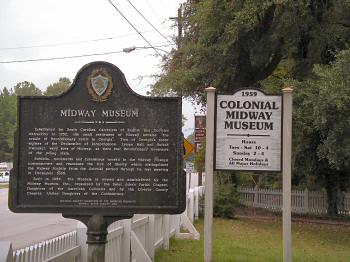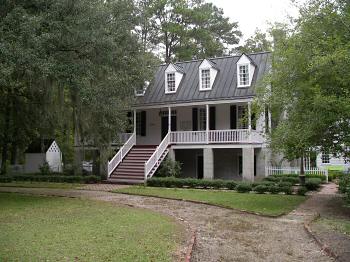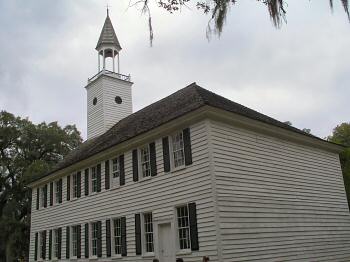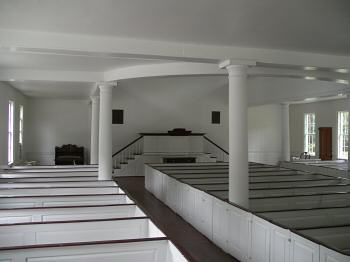|
 The
church key is no longer kept at the service station. If someone wants to
visit the church they will need to contact the Midway Museum in advance at
912-884-5837 or at
[email protected] to arrange a church tour. The Museum is open
Tuesday through Saturday from 10 - 4, last tour
is at 3:00 pm. Thank you, The
church key is no longer kept at the service station. If someone wants to
visit the church they will need to contact the Midway Museum in advance at
912-884-5837 or at
[email protected] to arrange a church tour. The Museum is open
Tuesday through Saturday from 10 - 4, last tour
is at 3:00 pm. Thank you,
Diane Kroell
Executive Director
Midway Museum, Inc.
912-884-5837
The Midway Museum, a raised cottage
style house typical of those built on the coast in the 18th century,
features exhibits, documents, and furnishings commemorating 18th and early
19th century life. The museum house was specifically designed to show a
typical plantation house, modeled after the houses that once stood in
Midway near the church.
The Midway museum Directions
I-95 to exit 76, at stop sign turn right onto Hwy 84. Follow to 1st red
light take right onto Hwy 17. Approx 1 mile-watch for it on your right.
The Midway museum is a reproduction of a late 18th-century raised cottage
and interprets coastal Georgia history. Exhibits include Civil War
documents and books.
The Midway Church, built in 1756, was burned during the American
Revolution and rebuilt in 1792. In this white-frame, New England-style
church, Sherman's cavalry set up foraging headquarters during the Civil
War. Today, giant live oaks draped with Spanish moss shade about 1,200
graves in the cemetery, among them two generals of the American Revolution
and Governor Nathan Brownson. During the Civil War, Sherman's cavalry
plundered county plantations and corralled animals in the walled, two-acre
cemetery. Browse through the museum, built in the raised cottage-style
architecture, typical of 18th Century plantation houses. Exhibits,
documents and furnishings used in coastal Georgia homes from colonial days
until the Civil War.
Midway Church is an excellent New England-looking structure that was built
by Puritans in 1754, burned by the British during the Revolutionary War,
and rebuilt in 1792. During Sherman's "March to the Sea," Union cavalry
under Gen. Judson Kilpatrick occupied Midway and Sunbury, and Kilpatrick
made his headquarters inside the church. His cavalry spent a month in
Liberty County, destroying plantations and the railroad. Next to the
church is Midway Museum, a replica of an 18-century coastal cottage, which
houses exhibits and materials about Midway's history, including exhibits
and information on the Civil War period. Many famous figures came from or
trace their descendants back to Midway, including Oliver Wendell Holmes,
Samuel Morse, Theodore Roosevelt, Jr., and Woodrow Wilson. Across the
street is Midway Cemetery, which contains the graves of a large number of
distinguished persons. A walking tour is available from the museum. |



